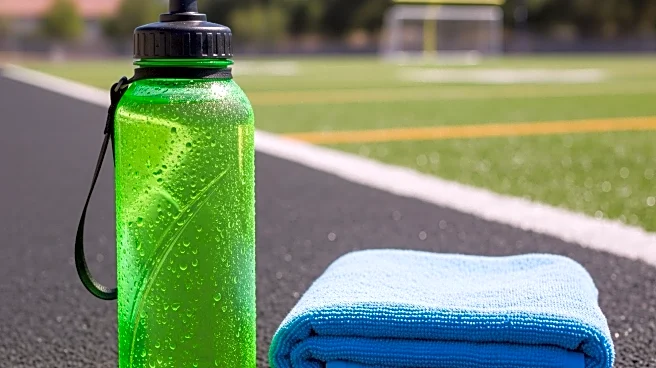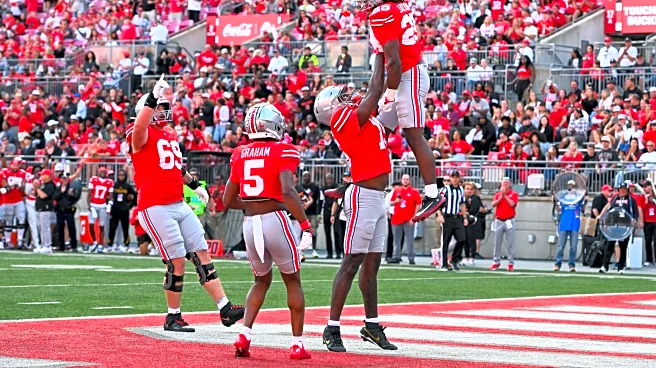What is the story about?
What's Happening?
As heat waves extend into fall and spring, experts emphasize the importance of protecting student-athletes from heat-related illnesses. While some schools invest heavily in climate-controlled facilities and cooling equipment, others focus on educational awareness, which is both effective and free. The National Federation of State High School Associations offers courses on sports safety, including heat illness prevention, and has distributed free thermometers and defibrillators to schools. Despite these efforts, heat-related illnesses remain a concern, with 66 deaths recorded among male athletes aged 13 to 18, primarily football players, between 1982 and 2022.
Why It's Important?
Heat-related illnesses pose a significant risk to student-athletes, particularly in sports like football where physical exertion is high. The availability of cost-effective educational resources and safety equipment can help schools with limited budgets protect their athletes. By prioritizing awareness and training, schools can prevent heat illnesses, which are entirely avoidable with proper precautions. This approach not only safeguards the health of young athletes but also reduces the potential for long-term health consequences associated with heat stroke.
What's Next?
Schools are encouraged to utilize available resources to educate coaches and students on heat safety. The University Interscholastic League in Texas provides training modules and videos on heat illness prevention, which can be particularly beneficial for schools without athletic trainers. As awareness grows, schools may adopt more comprehensive safety measures, ensuring that student-athletes are better prepared to handle extreme temperatures during practice and competitions.
AI Generated Content
Do you find this article useful?
















